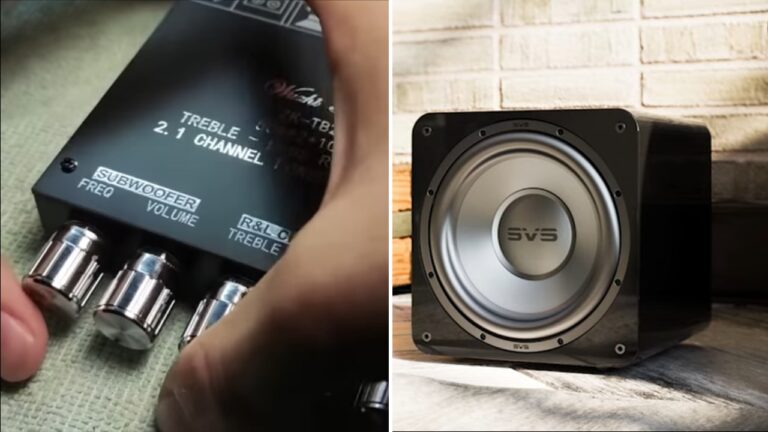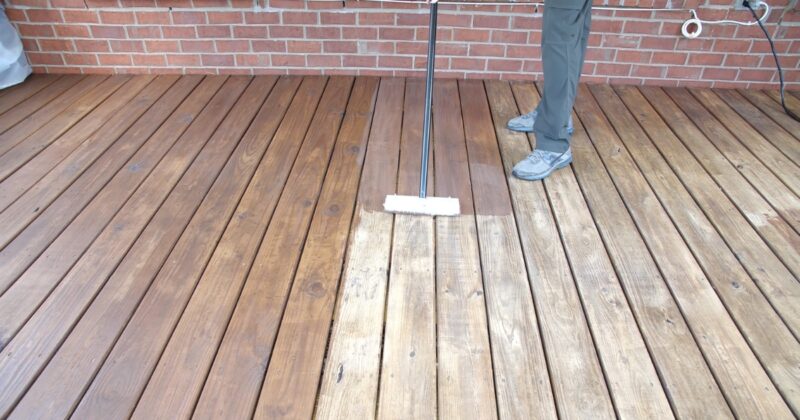Bringing a subwoofer into your sound setup can make a world of difference in how you experience music and movies. If you’ve got an older amplifier that you love but want to add that deep, rumbling bass to your audio, you’re in the right place.
Connecting these two devices might sound a bit tricky, but it’s easier than you think. In this guide, we’ll walk you through the steps, answering common questions along the way, so you can enjoy that heart-pounding bass without any hassle.
Connection Methods
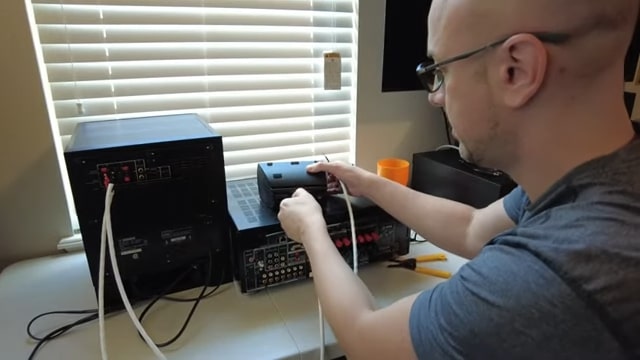
Depending on the type of subwoofer and the features of your old amplifier, there are several methods to connect them. Here, we’ll explore the most common ones.
1. Using Speaker Level Inputs
If your subwoofer has speaker-level inputs (often labeled as “high-level inputs”), and your amplifier doesn’t have a dedicated subwoofer output, this method is for you.
- Step 1: Connect your main speakers to the amplifier as you normally would.
- Step 2: Using additional speaker wires, connect the amplifier’s speaker terminals to the subwoofer’s speaker-level inputs. This allows the device to “listen” to the amplifier’s output and produce bass accordingly.
2. Using RCA Line Level Inputs
If your subwoofer has RCA inputs (often labeled “line level inputs” or “LFE”), and your amplifier has an available RCA output (like “tape out”), this method is ideal.
- Step 1: Connect an RCA cable from the amplifier’s “tape out” or “record out” to the subwoofer’s RCA input.
- Step 2: Ensure the subwoofer’s crossover settings (if available) are adjusted to blend seamlessly with your main speakers.
How to Set Up For Optimal Sound?
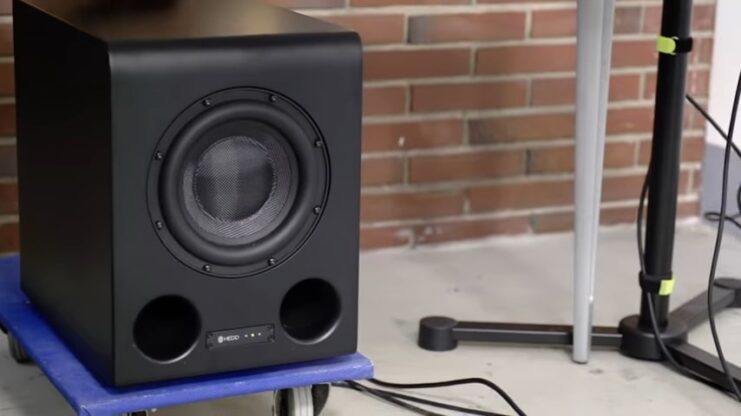
Once connected, it’s crucial to ensure that your setup delivers the best sound quality. This involves positioning and calibration.
Positioning Your Subwoofer
The placement of your device can significantly impact its performance. While bass frequencies are less directional than higher frequencies, proper positioning can reduce room-induced anomalies.
Ideal Placement
For most rooms, placing the subwoofer in a corner can increase its efficiency. However, if this results in too much bass, you can move it along the wall until you find the sweet spot. Don’t be afraid to move it around.
Sometimes, even a few inches can make a difference in sound quality.
Calibrating Your System
After positioning, calibration ensures that the subwoofer integrates seamlessly with your main speakers. Start by playing a track with consistent bass. Adjust the volume until the bass feels balanced with the rest of the music.
Crossover Settings
If your subwoofer has a crossover setting, start with it set to the highest frequency. Play music and gradually lower it until the bass transitions smoothly between the subwoofer and the main speakers.
Advanced Connection Techniques
While the methods mentioned above will work for most setups, there are advanced techniques that can be employed for specific situations or to achieve a more refined sound.
Using a Pre-Amplifier
If your old amplifier doesn’t have volume control or if you want more control over the signal sent to the subwoofer, a pre-amplifier can be a game-changer. A pre-amplifier can provide a cleaner signal, better volume control, and sometimes even tone controls to shape the sound further.
How to Connect It?
- Connect the “tape out” or “record out” from your old amplifier to the pre-amplifier
- Then, connect the preamplifier’s output to the subwoofer.
Chaining Multiple Subwoofers
For those wanting a more immersive bass experience, connecting multiple subwoofers can be the answer. These can provide a more even bass distribution across the room and can handle more complex audio tracks with ease.
Connect the first subwoofer to the amplifier as described in previous methods. Then, use its output (if available) to connect to the second device. Ensure both are calibrated to work in tandem.
Troubleshooting Common Issues
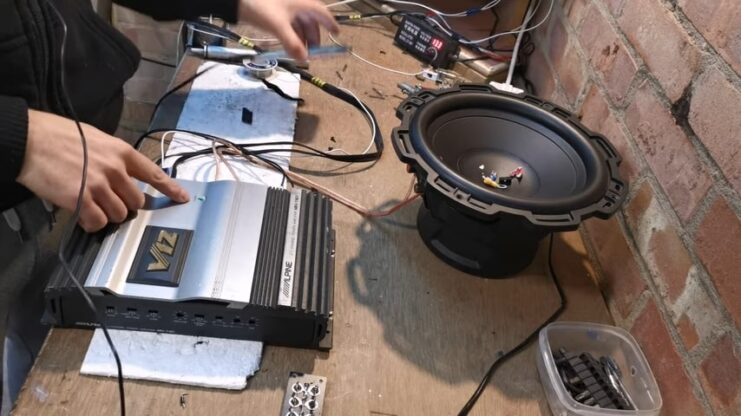
Even with the best of setups, issues can arise. Here’s how to tackle the most common problems.
Hum or Buzz from the Device
A common issue, especially with older equipment, is a persistent hum or buzz emanating from the subwoofer. Ground Loop is the most common cause. Ensure all your equipment is plugged into the same power strip or outlet.
If the issue persists, consider using a ground loop isolator.
Cable Interference
Ensure that your cables, especially RCA cables, aren’t running parallel to power cables. This can induce interference.
Subwoofer Not Producing Sound
If your device isn’t producing any sound, a few culprits might be at play.
- Ensure the subwoofer is turned on and properly plugged in.
- Double-check all connections. Ensure that cables are plugged into the correct inputs and outputs and are securely fastened.
How to Enhance Your Listening Experience?
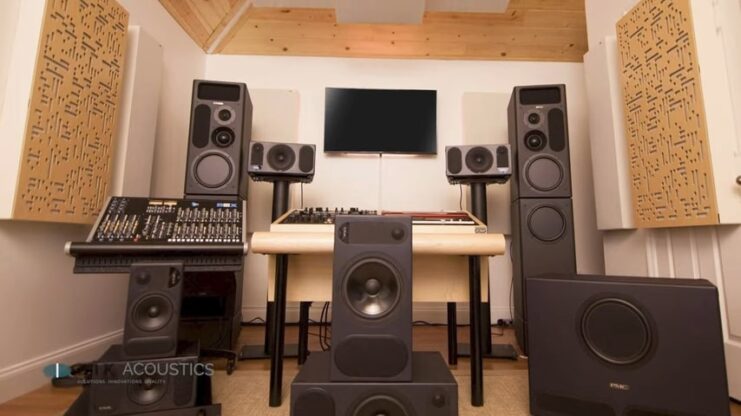
Once you’ve successfully connected your device and resolved any issues, there are ways to further enhance your audio experience.
Manage the Room Acoustics
The room itself plays a significant role in how sound is perceived. Consider adding acoustic panels or bass traps to manage reflections and standing waves. This ensures improved clarity, tighter bass response, and an overall more immersive listening experience.
Acoustic panels should be placed at reflection points, typically where sound bounces off walls. Bass traps are most effective in corners.
Provide Periodic Maintenance
Like any equipment, periodic maintenance ensures longevity and optimal performance. Dust and clean your subwoofer and amplifier regularly. Ensure vents and ports are free from obstructions.
Periodically inspect cables for wear and tear. Replace any that show signs of damage.
FAQs:
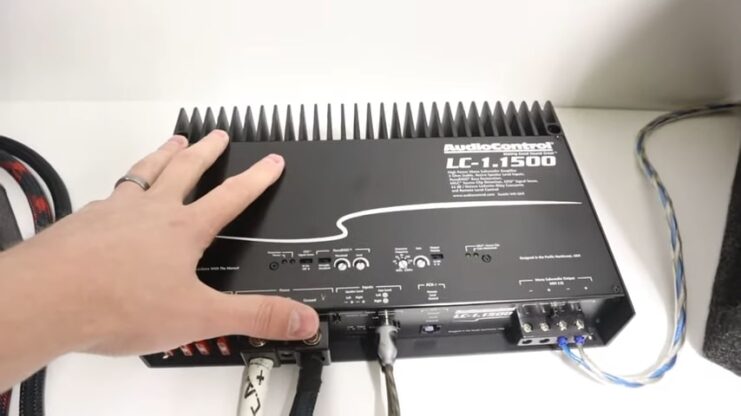
Can I use a subwoofer with a turntable setup and an old amplifier?
Yes, you can incorporate a subwoofer into a turntable setup, but ensure you have the necessary connections and consider potential phono preamp adjustments.
Do I need a separate power source for my device?
Powered subwoofers have built-in amplifiers and usually require a power source. Passive subwoofers need an external amplifier, which also requires power.
Can I use this device with a vintage receiver?
Yes, you can integrate a subwoofer with a vintage receiver by using the appropriate connections and configurations.
Should I be concerned about impedance matching?
Yes, make sure the device’s impedance is compatible with your amplifier’s specifications to avoid damaging either component.
How do I test if my device and amplifier are working together correctly?
Play content with deep bass and listen for a balanced sound. Adjust settings as needed to achieve the desired audio balance between the subwoofer and main speakers.
Final Thoughts
In conclusion, adding a subwoofer to your old amplifier doesn’t have to be a complicated task. By following the simple steps outlined in this guide, you can elevate your audio setup and enjoy a richer, more immersive sound experience.
Don’t let the age of your amplifier hold you back – with a little know-how, you can effortlessly enhance your audio system and enjoy deep, powerful bass that brings your music and movies to life. So go ahead and give it a try – your ears will thank you!
Related Posts:
- How To Install A Subwoofer To A Factory Stereo - DIY…
- How To Play Xbox 360 On Laptop With HDMI Cable? -…
- Logitech G602 Lag Wireless Gaming Mouse - Upgrade…
- Acer Aspire AZ3-700-UR52 Desktop 2024 - Upgrade Your…
- 11 Best Utensils For Cooking 2024 - Upgrade Your…
- 10 Best Laptop For Zoom 2024 - Upgrade Your Video…

